Apie Slovakiją
Priešistorė
Seniausi išlikę žmonių gyvenimo Slovakijos teritorijoje pėdsakai priklauso paleolito pabaigai (prieš 250 tūkstančius metų). Šios ilgos epochos laikotarpiu klimatas buvo nepastovus – ledynmečių periodai keitėsi su tarpledynmečiais. Šiam laikotarpiui priklauso neandertaliečio kaukuolės radinys Ganovcėje ir Veneros statulėlės radinys Moravanuose. Maždaug 5000–4000 m. pr. Kr. pasirodė pirmieji žemdirbiai (tai patvirtina akmeninių kirvių, pleištų bei indų radiniai Domicos urve).
Bronzos amžiuje Slovakijos teritorijoje buvo daugybė skirtingų archeologinių kultūrų. Šio laikotarpio radiniai - daug bronzinių pjautuvų, vežimas su lenkto rėmo ratais bei medinių pastatų, statytų nenaudojant vinių, pėdsakai.
Geležies amžius ir su juo susijusios technologijos atkeliavo į Slovakiją greičiausiai iš Mažosios Azijos arba Italijos. Slovakijoje pradėjo vystytis geležies, švino, aukso ir druskos gavyba. Pirmą kartą pradedamas naudoti žiedžiamasis ratas.
Keltų atėjimas
Ketvirto šimtmečio prieš mūsų erą pabaigoje į Slovakiją keliomis bangomis atsikėlė pirmos gentys, kurių pavadinimas yra žinomas – Keltai. Apie juos išliko rašytiniai liudijimai romėnų šaltiniuose.
Keltai įkūrė keletą įtvirtintų gyvenviečių (opidumų). Kai kurios iš jų, pavyzdžiui, Bratislavos opidumas, nuo to laiko yra nuolat nepertraukiamai apgyvendintos. Dauguma keltų vis tik gyveno nedidelėse gyvenvietėse, namus statė iš medžio, namai buvo rakinami geležinėmis spynomis. Keltai buvo nagingi amatininkai – kalviai, puodžiai, monetų kalėjai, žemdirbiai ir prekeiviai. Jie palaikė glaudžius ryšius su graikų ir romėnų civilizacijomis, kurios turėjo didelę įtaką keltų kultūrai.
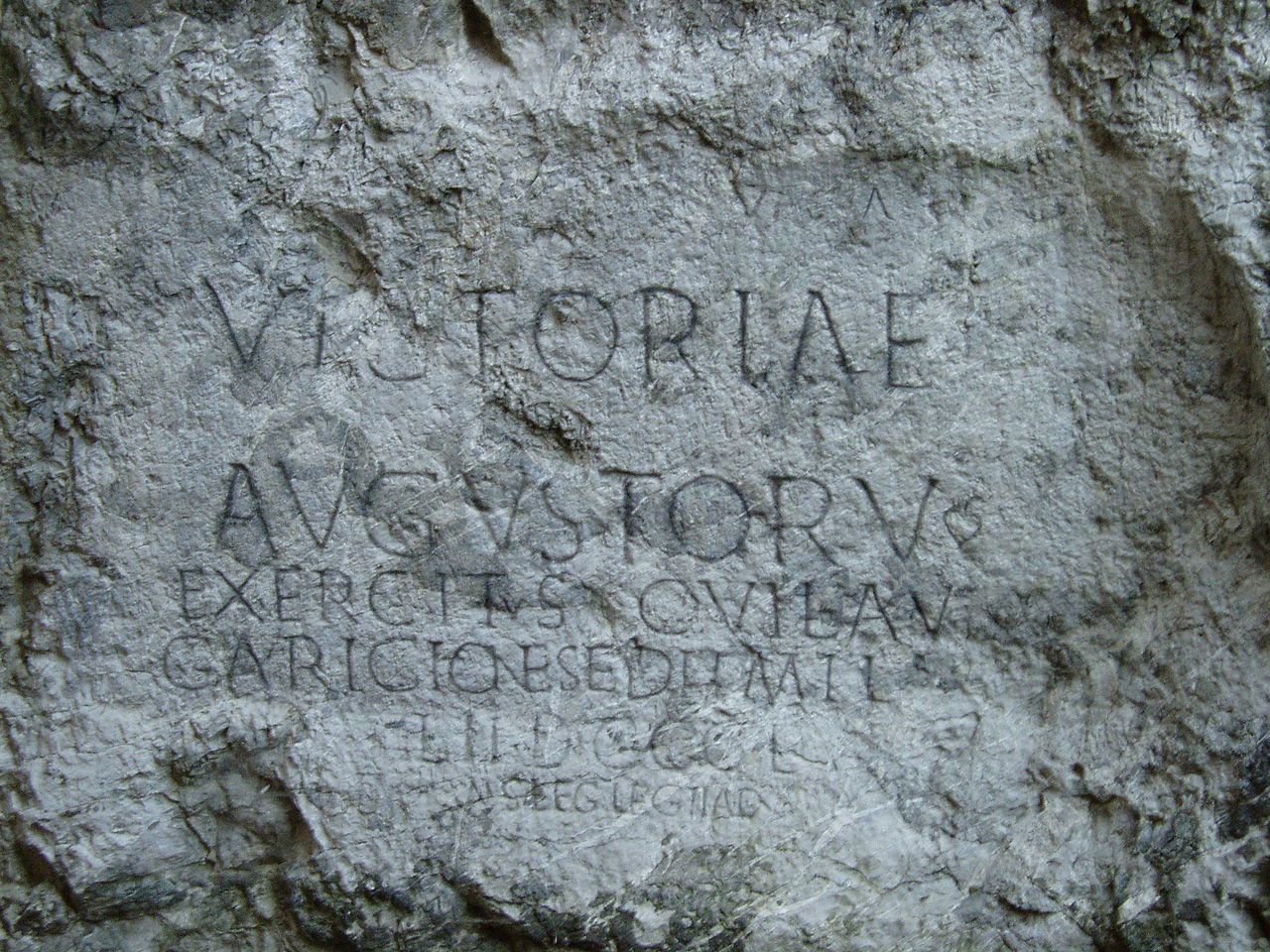
Wikimedia Commons
Pirmame amžiuje prieš mūsų erą į dabartinės Slovakijos teritoriją atkeliauja dakai, prasideda keltų ir dakų tautų ir kultūrų maišymasis. 10 m. pr. m. e. romėnai sutriuškino dakus ir paslinko Romos imperijos sienas iki vidurio Dunojaus. Dakų gentys išnyksta iš Slovakijos teritorijos I mūsų eros amžiuje. Keltų likvidaciją užbaigė germanų įsiveržimai iš šiaurės vakarų. Slovakijos šiaurėje keltai išliko iki pat II mūsų eros amžiaus.
Ketvirtojo mūsų eros amžiaus pabaigoje Romos imperiją buvo apėmęs gilus nuosmukis. Prasidėjo tautų kraustymasis, kuris prisidėjo prie Romos imperijos žlugimo. Didelė tuo metu Slovakijoje gyvenusių žmonių dalis iškeliavo arba žuvo karuose su naujai atvykusiomis tautomis. Per Slovakijos teritoriją tuo metu keliavo daugybė genčių, pavyzdžiui, vestgotai, ostgotai, langobardai ir gepidai. Jas persikelti vertė klajoklių hunų puolimai. Pastarieji savo centrą įkūrė visai netoli Slovakijos – tarp Tisos ir Dunojaus.
Slavų atėjimas
Viena iš genčių, atsikėlusių tuo laikotarpiu keliomis bangomis į Slovakijos teritoriją, buvo slavai. Pirmoji atsikraustymo banga buvo V-VI amžiuje. Nauji atvykėliai dažnai įsikurdavo tarp vietinių gyventojų. Slavai tuo laikotarpiu kolonizavo tik apie 10% teritorijos, likusi dalis vis dar buvo laukinės neliestos žemės. Naujieji atvykėliai auginio miežius, soras, kviečius, aguonas, linus. Jie vertėsi žemdirbyste ir gyvulių auginimu. Taip pat buvo gabūs amatininkai – daugiausia juvelyrai ir puodžiai. Vakaruose Slavai susidūrė su Frankų imperija. Kadangi slavai pradžioje nedalyvavo jokiuose dideliuose mūšiuose, iš to laikotarpio apie juos išliko labai mažai rašytinių paminėjimų.
VI amžiaus viduryje i Dunojaus žemumą įsiveržė Avarų gentys. Dėl jų įtakos slavai savo mirusiuosius nustojo denginti ir pradėjo laidoti žemėje.
Samo valstybė
VI amžiuje Slavai tapo priklausomi nuo klajoklių Avarų genčių, dėl to įvyko keletas sukilimų. Viename sukilime dalyvavo ir frankų pirklys Samo, kurį slavai dėl jo drąsos ir karinių sugebėjimų išsirinko genčių sąjungos – Samo valstybės (623–658) – karaliumi. Po Samo mirties 658 metais slavų genčių sąjunga vėl iširo.
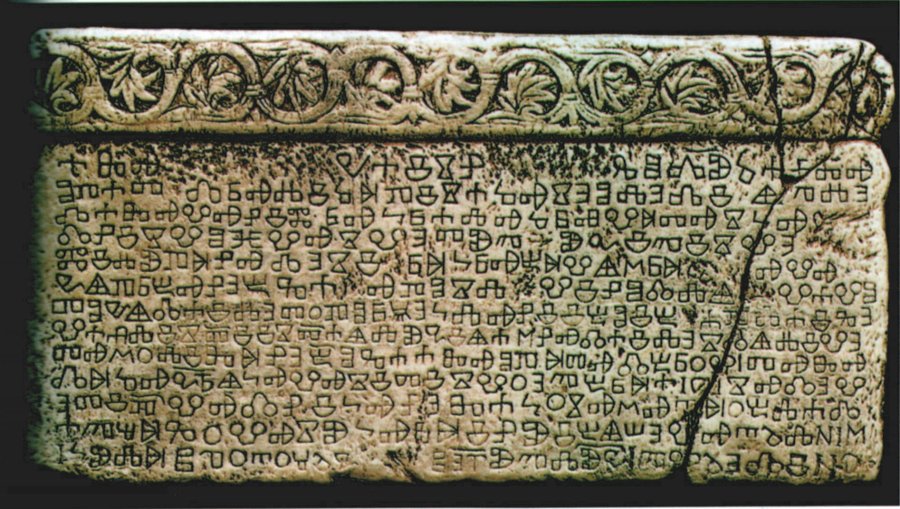
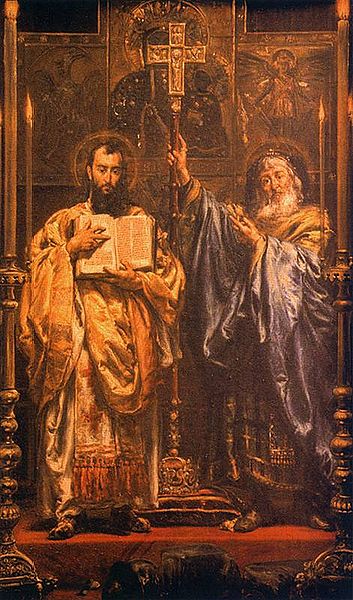
Wikimedia Commons
Didžioji Moravija
Nuo VIII amžiaus slavų gentys vėl pradėjo vienytis. Pirmoje IX amžiaus pusėje susikūrė dvi kunigaikštystės - Moravijos (jai vadovavo Mojmír I) ir Nitros (vadovavo Pribina). 833 metais Mojmír I išvijo Pribiną iš Nitros kunigaikštystės ir abi kunigaikštystes sujungė, taip susikūrė Didžioji Moravija. Išvytasis Pribina persikėlė prie Balatono ežero, kur įkūrė miestą ir pilį Blatnohrad.
Didžiosios Moravijos įtakos augimas sukėlė Rytų frankų karalystės pasipriešinimą. Siekdamas atsikratyti Rytų frankų įtakos, kunigaikštis Rastislavas 861 metais kreipėsi į popiežių Mikalojų I prašydamas atsiųsti vyskupą ir kunigų dvasininkijai mokyti, tačiau jo prašymas nebuvo išpildytas. Tokį patį prašymą išsiuntė ir Bizantijos imperatoriui Mykolui III, šis 863 metais į Moraviją pasiuntė tikėjimo mokytojus, kuriems vadovavo šv. Konstantinas ir Metodijus.
Konstantinas (prieš mirtį priėmęs vienuolišką vardą Kirilas) ir Metodijus iškart po atvykimo į Moraviją įkūrė pirmą slavų mokyklą (Didžiosios Moravijos mokyklą, kurioje buvo mokomi slavų dvasininkai), sukūrė slavų rašmenis – glagolicą, pradėjo naudoti senąją slavų kalbą liturginėse apeigose bei su savim atsigabeno liturginių ir biblinių tekstų vertimus, kuriuos buvo parengę iš anksto. Jų misija Didžiojoje Moravijoje užima slavų ir slovakų istorijoje ypatingai svarbią vietą.
Apie Didžiosios Moravijos žlugimą tikslių žinių neišliko. Po klajoklių vengrų (madjarų) genčių, vadovaujamų Arpado, įsiveržimo 906 arba 907 metais Didžioji Moravija, manoma, prarado savo įtaką ir palaipsniui subyrėjo, o Slovakijos žemės atsidūrė besiformuojančios Vengrijos teritorijoje.
Slovakija Vengrijos sudėtyje
1000 metais Steponas I, kuris užbaigė Vengrijos formavimo procesą, tapo pirmuoju Vengrijos karaliumi. Slovakijos teritorija beveik tūkstančiui metų tapo Vengrijos karalystės dalimi. XVI amžiuje prasidėjo turkų puolimai, o 1521 metais Osmanų kariuomenė įsiveržė į Vengriją. Karalius Liudvikas II Jogailaitis nepakankamai įvertino pavojų ir 1526 m. rugpjūčio 29 d. mūšyje prie Mohačo Vengrijos kariuomenė buvo sumušta, o pats karalius žuvo, nuskendęs Dunojuje. Pralaimėjimas prie Mohačo lėmė 175 metus trukusį turkų viešpatavimo Vengrijoje laikotarpį. Turkai buvo nugalėti tik 1683 metais prie Vienos. Prasidėjo palaipsnis turkų išstūmimas iš Vengrijos, galutinai užbaigtas 1685 metais.
1740 metais sostą užėmė Marija Teresė, labiausiai žinoma dėl savo reformų. Ji įvykdė kariuomenės reformą, steigė manufaktūras, kelias iš jų ir Slovakijoje (Šaštín, Halič, Holíč miestuose). Žemės ūkyje rėmė naujų augalų rūšių kultivavimą. Įvykdė ir teismų reformą, sušvelnino kai kurias bausmes, įdiegė visų piliečių formalaus lygumo prieš teismą principą. Švietimo reforma (//Ratio educationis//) įvedė privalomą mokslą mokykloje ir padėjo pagrindus aukštesnio lygio švietimui.
Jos sūnus Juozapas II tęsė reformas Vengrijoje. 1781 jis paskelbė vadinamąjį „tolerancijos liudijimą“, kuriuo protestantams ir kitoms nekatalikiškoms bažnyčioms suteikė tam tikras religines laisves. 1785 panaikino senųjų regionų savivaldą ir pakeitė ją dešimtimi apskričių, perkėlė daugelį centrinės valdžios įstaigų iš Slovakijos į Budą, panaikino baudžiavą Vengrijoje (1781 m. Čekijoje).
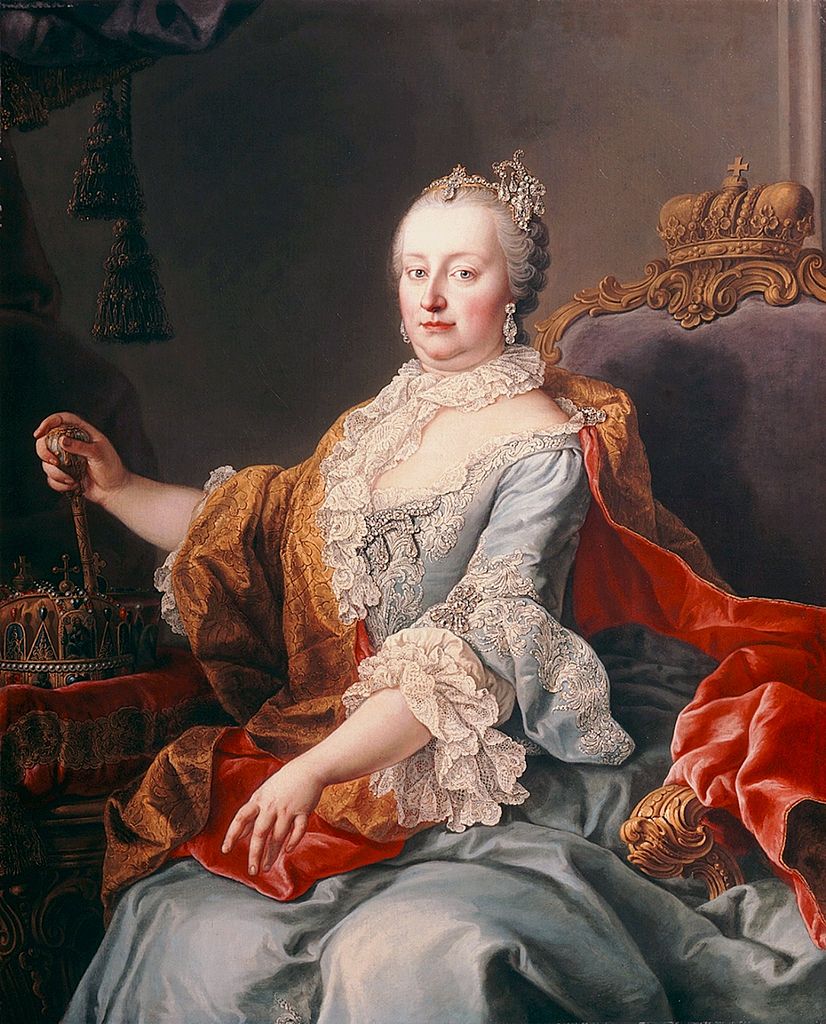
Wikimedia Commons
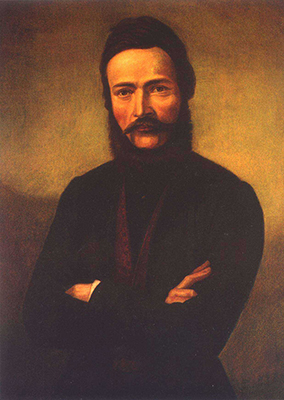
Slovakų tautinis atgimimas
Slovakų tautos formavimosi procesas buvo ypatingai sunkus dėl vengrų bajorų priespaudos, vengrų nacionalizmo ir represijų Slovakijos teritorijoje. Slovakų teisių gynėja tapo inteligentija, daugiausia kunigai. Vienas iš pagrindinių tikslų buvo literatūrinės slovakų kalbos kodifikavimas.
Pirmasis slovakų kalbą kodifikuoti pabandė katalikų klebonas Jozef Ignác Bajza, jis parašė pirmą romaną slovakų kalba //René mládenca príhody a skúsenosti// (išspausdintas 1783 metais). Tačiau Bajzos kalbinė forma nebuvo nusistovėjusi ir jo pasiūlymas neprigijo.
Tuo metu inteligentija buvo pasidalinusi į katalikus ir protestantus. Katalikai buvo už tai, kad slovakai turėtų savo kalbą, o protestantai buvo už biblinės čekų kalbos vartojimą, čekų ir slovakų vienybę bei nepalaikė literatūrinės kalbos kodifikavimo.
Katalikų kunigas Anton Bernolák 1787 metais literatūrinę slovakų kalbą kodifikavo remdamasis Vakarų Slovakijos tarme (jo kalba vadinama bernolákovčina).
Kitą sėkmingą kalbos kodifikavimą atliko Ľudovít Štúr (Liudovytas Štūras). 1843 metų pradžioje Štūras savo artimiausiems draugams išsakė ketinimą suvienyti katalikišką ir protestantišką slovakų sroves remiantis bendra literatūrine kalba. Pagrindu jai pasirinko Vidurio Slovakijos tarmę dėl jos paplitimo, autentiškumo ir suprantamumo. 1843 m. liepos 11 dieną Ľ. Štúr, J. M. Hurban ir M. M. Hodža susitiko Hurbano parapijoje, kaime Hlboké, kur susitarė dėl būdų, kaip įdiegti slovakų kalbos vartojimą.
Slovakija po Vengrijos imperijos žlugimo
1918 m. spalio 28 d. Slovakija tapo Čekoslovakijos dalimi. Iš slovakų veikėjų prie respublikos įkūrimo daug prisidėjo M. R. Štefánik, kuris būdamas Prancūzijos diplomatu padėjo T. G. Masarykui ir E. Benešui užmegzti ryšius su Antantės valstybių atstovais. Taip pat jis aktyviai dalyvavo organizuojant Čekoslovakijos legionus – disciplinuotą ir pajėgią kariuomenę. Pirmuoju šalies prezidentu 1918 m. lapkričio 14 d. tapo Tomas G. Masarykas. Slovakija buvo Čekoslovakijos dalimi iki 1939 m., kai susikūrė Pirmoji Slovakijos Respublika.
Po Antrojo pasaulinio karo Čekoslovakija buvo atkurta ir pateko į TSRS įtakos sferą. 1960 m. liepos 11 d. buvo priimta nauja konstitucija, kuri įtvirtino socializmo pergalę Čekoslovakijoje. Šalies pavadinimas buvo pakeistas iš Čekoslovakijos Respublikos (ČSR) į Čekoslovakijos Socialistinę Respubliką (ČSSR) ir šalis buvo oficialiai paskelbta socialistine. Režimas ir šalies užsienio politika pasikeitė tik po 1989 m. lapkričio, kada šalyje įvyko vadinamoji Aksominė revoliucija (Nežná revolúcia). Čekoslovakija vėl tapo demokratine valstybe, labiau orientuota į Vakarus. 1990 metų pavasarį buvo priimtas konstitucinis įstatymas, kuriuo valstybės pavadinimas pakeistas į Čekijos ir Slovakijos Federacinę Respubliką (ČSFR). 1990 m. birželį ČSFR vyko pirmieji laisvi rinkimai. Netrukus po to, kai Slovakijos nacionalinė taryba priėmė Slovakijos Respublikos suvereniteto deklaraciją (1992 m. liepos 17 d.), Čekijos ir Slovakijos rinkimų laimėtojai Bratislavoje susitarė padalinti valstybę.
1992 m. rugsėjo 1 d. buvo priimta, o 1992 m. rugsėjo 3 d. pasirašyta Slovakijos Respublikos Konstitucija. 1993 m. sausio 1 d. ČSFR taikiai pasidalino į dabartinę Slovakiją ir Čekiją. Po 75 metų bendros čekų ir slovakų valstybės egzistavimo susikūrė Slovakijos Respublika, kurios pirmuoju prezidentu tapo Michal Kováč.
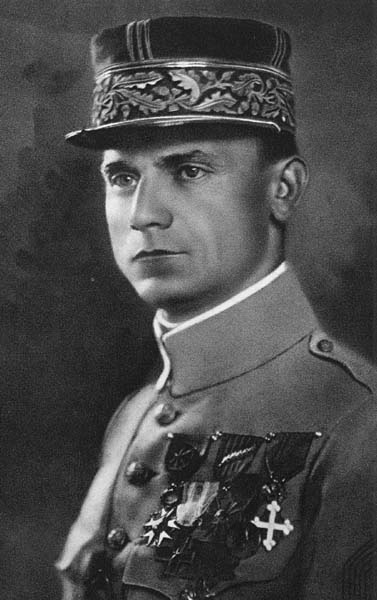
Wikimedia Commons
Šaltinis: https://sk.wikipedia.org